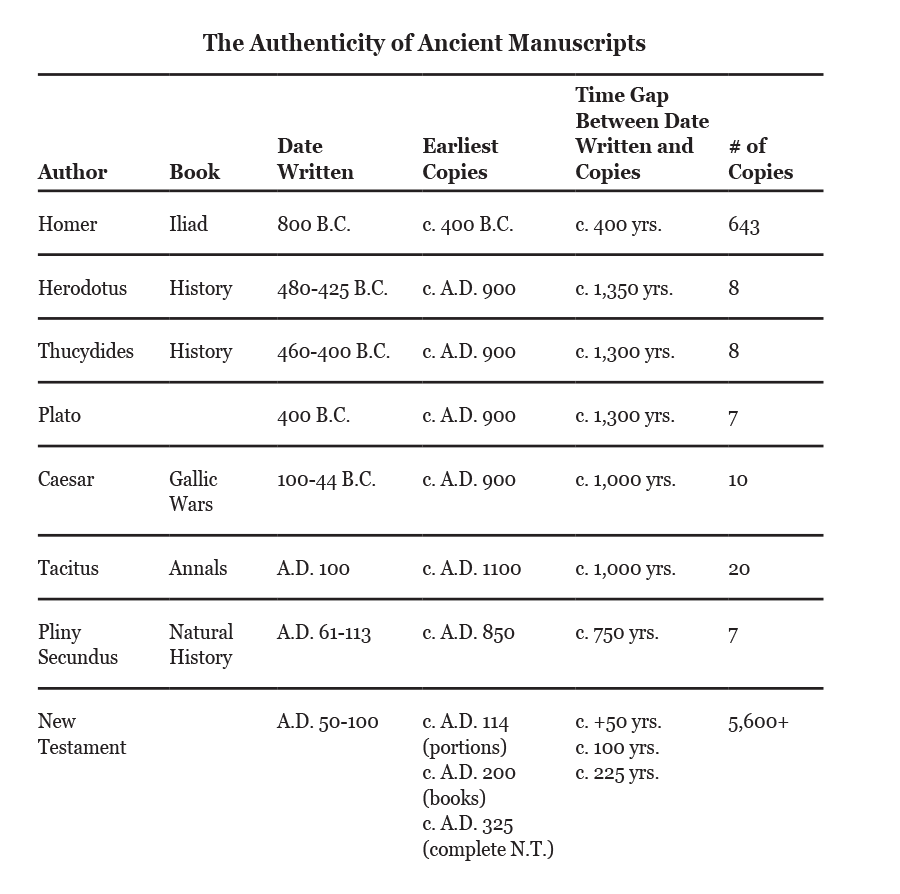
Over time, some modern thinkers have argued that the Bible shouldn’t be considered a historical manuscript, that it may be fictitious. Personally speaking, I believe that the prophecies and fulfillments are more than enough to refute that argument, but I’ll offer one more validating thought.
To prove the legitimacy of an ancient manuscript, historians will often compare all of the known copies of it that date to a given time period. If a manuscript is legitimate, all of its copies (which scribes have written) should be virtually identical; otherwise it can’t be authenticated as a genuine work. The more copies, the better. It’s like the old telephone game where one person starts with a story, and by the tenth person, the story is completely different.
So consider this: there are over 5,600 surviving copies of New Testament manuscripts, some of which were written in the second century, less than 100 years after the original manuscripts. Those 5600+ copies correspond to each other with 99.5% accuracy. That is unparalleled in any other ancient manuscript.

In addition, there are 19,000+ ancient copies of the New Testament in the Aramaic, Syriac, Coptic and Latin languages. The total New Testament document base contains over 24,000 manuscripts. The chart on the previous page outlines a few well-known, widely accepted authors and their manuscripts.23
The writings of Homer, Caesar, Plato, Tacitus, Thucydides, Herodotus and many others are often accepted as truth in secular culture and are taught in public school systems. It amazes me how people can justify in their minds that something like Plato (7 copies, and the earliest copy being 1,300 years after it was supposedly written) can be considered historical fact, whereas the Bible (5,600+ copies, some of which were written within 100 years of the original) is deemed fiction.
The unfortunate reality is this: as humans if we don’t want something to be true, we can convince ourselves that it’s not true. That doesn’t make it any less true; it just makes us willfully ignorant.
23 This chart was adapted from three sources: 1) Christian Apologetics, by Norman Geisler, 1976, p. 307; 2) the article “Archaeology and History attest to the Reliability of the Bible,” by Richard M. Fales, Ph.D., in The Evidence Bible, Compiled by Ray Comfort, Bridge-Logos Publishers, Gainesville, FL, 2001, p. 163; and 3) A Ready Defense, by Josh Mcdowell, 1993, p. 45.